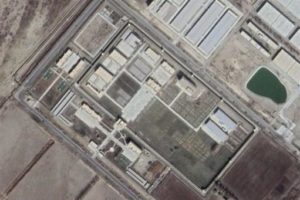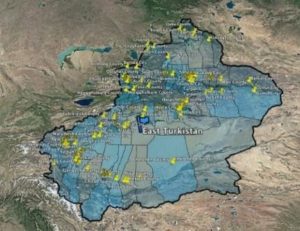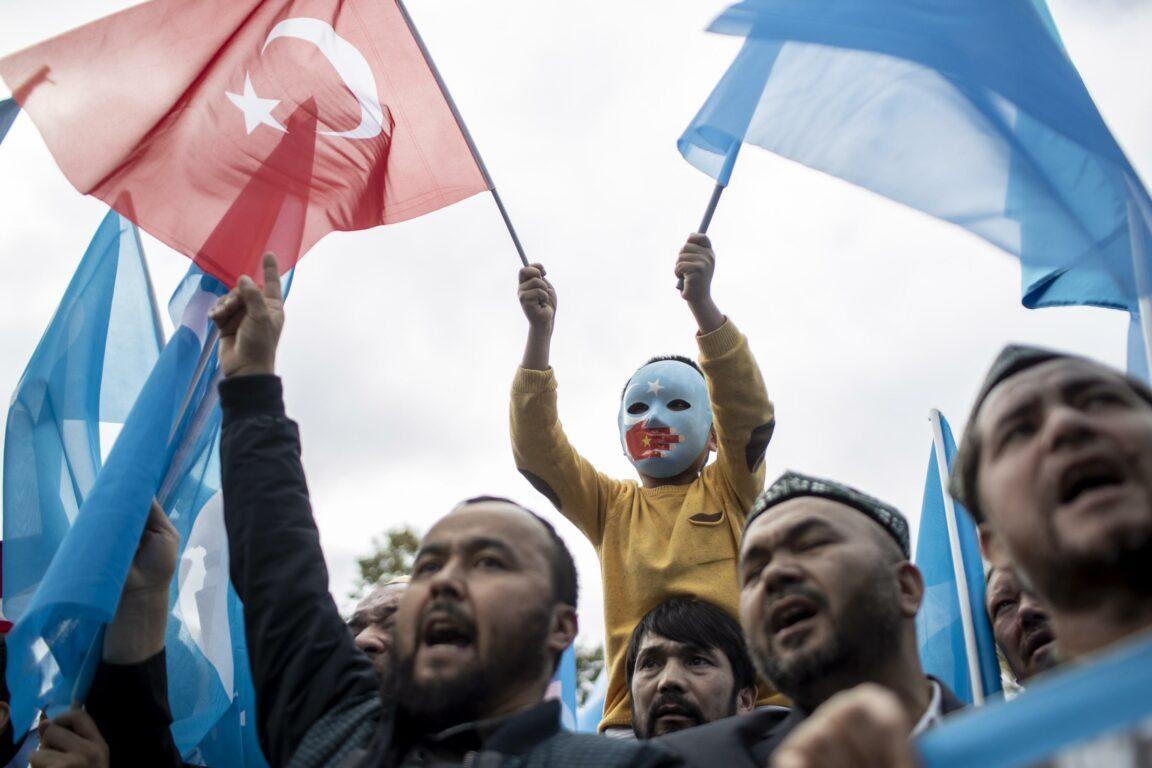The Chinese government long denied that the camps existed, but after images of camp construction with watch towers and barbed wire fences emerged, the government acknowledged what they call “re-education centers” for Uighurs.

Almost a year ago, Feroza Aziz, an American teenager, posted a short video on Tiktok, a Chinese social network, which went viral and brought the topic to light. The girl pretended to do a makeup tutorial to denounce the situation of repression in China against minorities of Uyghurs, Kazakhs and other predominantly Muslim ethnic groups in the province of Xinjiang (Xuar), in the far northwest of the country, and that would cost her censorship by the Chinese social media.
According to satellite images obtained by the Australian Strategic Policy Institute, in Xinjiang there are 380 internment centres (100 more than previously thought), ranging from re-education camps to lower security to fortified prisons, where It is estimated that over a million people are held arbitrarily in fields of “de-extremization”.
 The Chinese authorities had argued that their re-education system was running out, but ASPI’s evidence shows that the construction of new facilities continued.
The Chinese authorities had argued that their re-education system was running out, but ASPI’s evidence shows that the construction of new facilities continued.
From the captured images, it has been discovered that often the camps are inside or near factory complexes, which suggests the direct link between arbitrary detention and forced labour.
Why in Xinjiang?
Xinjiang has been under control of Chine since it was annexed in 1949. Many Uighurs still identyfied it by its previuos name, East Turkestan, but in 2017, the Xinjiang government passed a law prohibiding men from growing long beards and women from wearing veils and dozens of mosques have also been demolished.
Why were they created?
“Voluntary training at work”, “vocational training centres”, these are the definitions given by Beijing regarding them.  Following the Islamic attacks in the United States, Chinese officials began to take precautionary and restrictive measures against religious minorities, arguing that young Uyghurs could have been influenced by Islamic extremism and become potential terrorists. That’s why they have created a control system, called the Integrated Joint Operations Platform (IJOP) introducing a new application on mobile devices “Kuai Ya” to control the exchange of videos and private messages, and through this, the police summons the citizens or knocks at their door at night to question them, and subsequently they are deported to these Laogai (term used to indicate the different forms of forced labour provided by the Chinese prison system).
Following the Islamic attacks in the United States, Chinese officials began to take precautionary and restrictive measures against religious minorities, arguing that young Uyghurs could have been influenced by Islamic extremism and become potential terrorists. That’s why they have created a control system, called the Integrated Joint Operations Platform (IJOP) introducing a new application on mobile devices “Kuai Ya” to control the exchange of videos and private messages, and through this, the police summons the citizens or knocks at their door at night to question them, and subsequently they are deported to these Laogai (term used to indicate the different forms of forced labour provided by the Chinese prison system).
Life inside the prisons
 The prisoners live in a small, dirty rooms, handcuffed with their heads shaved; every movement is monitored by ceiling cameras. They must learn Chinese by memorizing propaganda songs and submit to the conditions imposed. Those who do not bend, suffer various tortures in the «black room»; they arealso forced to swallow pills and get injections, officially to prevent disease, but in reality, they are medical experiments.
The prisoners live in a small, dirty rooms, handcuffed with their heads shaved; every movement is monitored by ceiling cameras. They must learn Chinese by memorizing propaganda songs and submit to the conditions imposed. Those who do not bend, suffer various tortures in the «black room»; they arealso forced to swallow pills and get injections, officially to prevent disease, but in reality, they are medical experiments.
Working hours are up to 16 hours per day, depending on the type of activity (industry, fields or mines). Prisoners are allowed to leave only if necessary, for example illness, but even so, they must have someone to watch over them.
The charge
In a July letter to the U.N. Human Rights Council, 22 countries, mainly European and the United States, responded to “distrurbing reports of large-scale arbitrary detentions of Uighurs” by condemning Chinese leadship. Notably, four days later, 37 countries defended China’s “remarkable achivements in the field of human rights” by protecting their country from “terrorism, separatism and religious extremism”. 
The list of signatoris included the muslim-majority countries Saudi Arabia, Egypt and Quatar.
Recently, the U.S. condemned China on the global stage at the U.N. General Assembly with more than 30 other countries.
The situation had actually been known to the United Nations for a long time, but, Feroza says “We cannot allow it to happen again, we cannot remain silent while another holocaust takes place before our eyes”. Since then, the attention of the press and world public opinion has focused more and more on these Chinese concentration camps, which have become a real international case, but the situation is still underestimated by many and not enough is said, making it impossible to act and take a stand against this massacre.
Chiara Gallinini, Sofia Giuliano,
Giulia Lucchi, Chiara Gori
3BL
